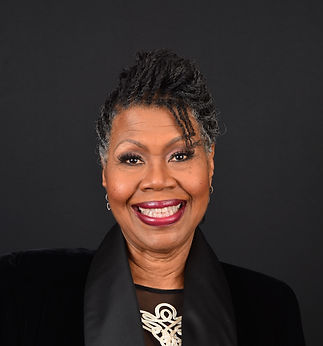
Gwen McKinny
Somewhere Over the Rainbow…Identity Matters
Somewhere Over the Rainbow…Identity Matters
Gwen McKinney
Creator & Campaign Director, Unerased Black Women Speak
In this day of deep racial and cultural divides, an alliance of non-White communities delivers strength in numbers. Individually we are marginalized as “ethnic minorities,” but together our expanded ranks transform plural identities into a solidarity bond. It is commonly embraced as People of Color or BIPOC (Black, Indigenous and People of Color).
Unity among Indigenous and transplanted people of Africa, Asia and Latin America is certainly a blow against Us vs Them identity politics. But how real is “BIPOC unity”? When does the brilliance of the rainbow become the tyranny of multiculturalism?
Unapologetically committed to the interests of Black women, I am convinced that within the big multiracial tent exist complex and thorny questions about assimilation, multi-racial unity, and anti-Black racism that are rarely addressed. Lines blur between unity and dilution; projecting new narratives and ignoring old unresolved truths; challenging racial inequality and conflating cultural heritage and lived experiences. Despite well-meaning intentions, “People of Color” is not fungible nomenclature. It is often an insidious filter that renders Blackness invisible.
A broad brush to paint the identity of myriad racial groups does not unify but undermines our individual political struggles, reducing this vast collection of humanity to a homogenized stew. It reflects everyone and no one.
Labels are ingrained in the American psyche, and Blackness, whether fused into a rainbow or on its own, invokes implicit and overt contempt. While race may be defined as an artificial construct, Blackness (both in colorism and cultural experience) is a strident marker deeply fused into the racist birth of our nation.
I am a child of the mid-20th Century, a binary world of Black and White. Witness sepia-tone news images of hoses and dogs, unleashed on people who looked like me by haters who I could never be. The images became a dual construct – blackness reflected through survival and resistance, and whiteness, a bulwark of privilege and oppression.
The era of color TV and proliferating mass media captured the social and political dynamics that would reframe race as technicolor. The explosion of Black liberation, radical feminism tinged by the grievances, and mass movements of Mexican farmworkers, Indigenous Nations and global immigration created a “third world” in our “first world.”
As unifying as People of Color may seem, it is a dismissive shorthand that undermines real identity. At best it is a benignly convenient cover-all, and at worse, an erasure of distinct experiences and realities. Somewhere between struggle and solidarity, multicultural unity shifted into one-size-fits-all advocacy. Whether by intent or accident, the rainbow is a foil that can distort real data, producing inaccurate assessments and flawed policies. We cannot redress injustice without actions that respond appropriately to structural inequality, from Day One rooted in anti-Black racism.
For instance, COVID-19 exacted a disproportionate deadly toll in Black communities. To speak of the victims anecdotally as “People of Color” or even as “Black and Brown” does violence to solutions to stem the death of all people – but disproportionately across the toll of Black lives. More insidious, the obfuscation also explains away the Black death tolls as some genetic or social pathology having nothing to do with the systemic impact of centuries of health disparities and racial inequality.
Similarly, skyrocketing Black maternal deaths (across all socioeconomic strata), infant mortality, and cardiovascular disease are today widely recognized as social determinants in health that disproportionately impact Black people. The unspoken banner: Anti-Black racism kills.
Other social injustices – police abuse, book banning, voter suppression, assaults on diversity and inclusion, reversals of affirmative action – certainly affect Native Americans, Latinos, and Asian Pacific Islanders, but the extent, impact, and push for solutions demand strategies based on each racial and ethnic group.
The first solution to the amorphous labeling is easy. Call us who we are. If the reference is to Black Americans, Indigenous or American Indians, Asian Pacific Islanders, South Asians, Arab Americans, Mexicans, Salvadorans or Dominicans, grant the name each identity and narrative deserves. Doing so will consume more time and space in a limited character-driven world. But it beats using the broad brush that colors far-flung constituencies into a nondescript monochrome.
Our individual and collective experiences of oppression can bridge intractable racial divides that have defined this country for centuries. The experiences of Black people, or any group of oppressed people, should not be subverted or erased in the quest for an elusive rainbow.
Unity among “nonwhite” people – aka people of color, women of color, Black and Brown, racial minorities, ethnic communities – is an important weapon against structural racism. Drawing from a shared experience of racialized oppression means locking arms to then travel to the other side of the intractable racial divides that define this country. The possibilities of breaking down barriers across race, ethnicities, and culture have transformative value. But the push to the goalpost must spring from truth more than ideals.